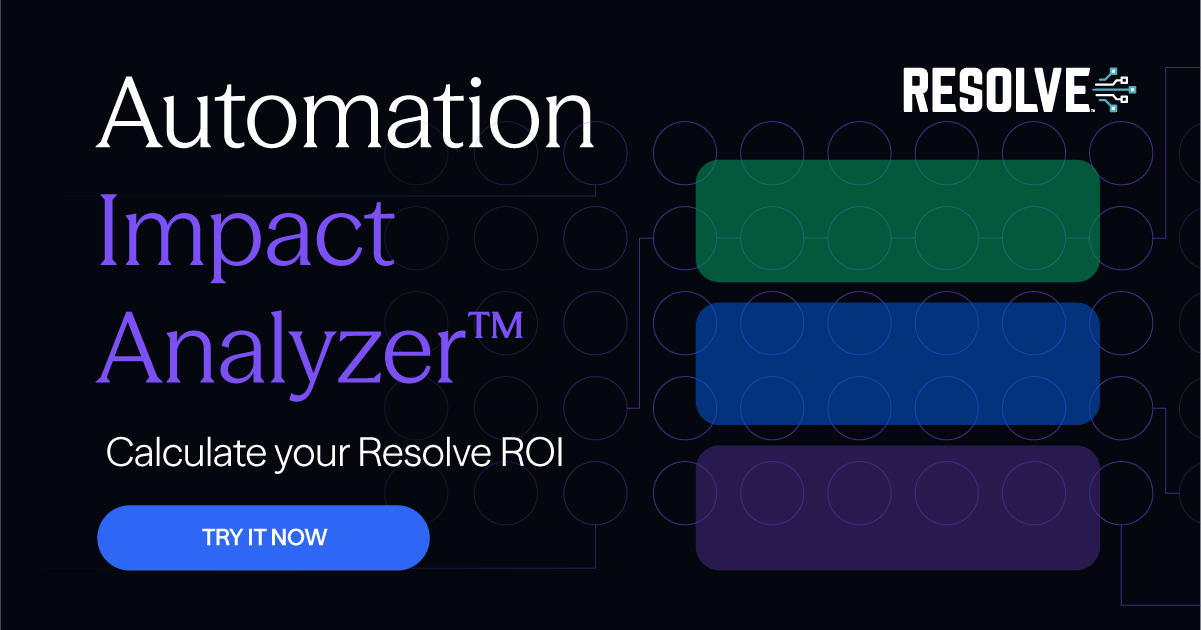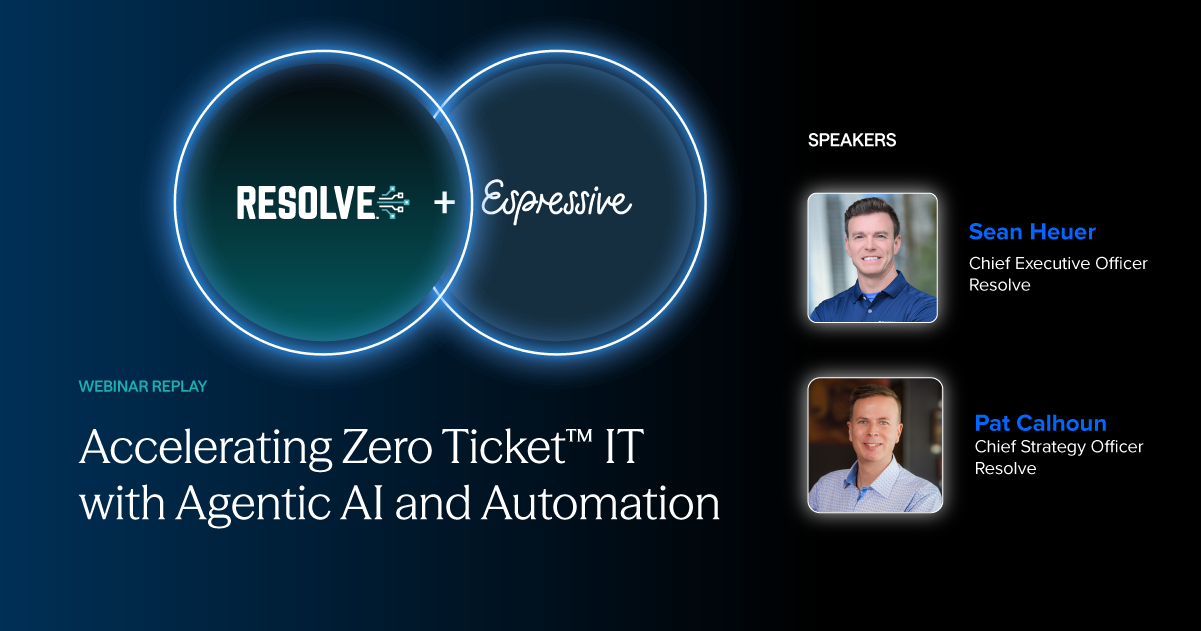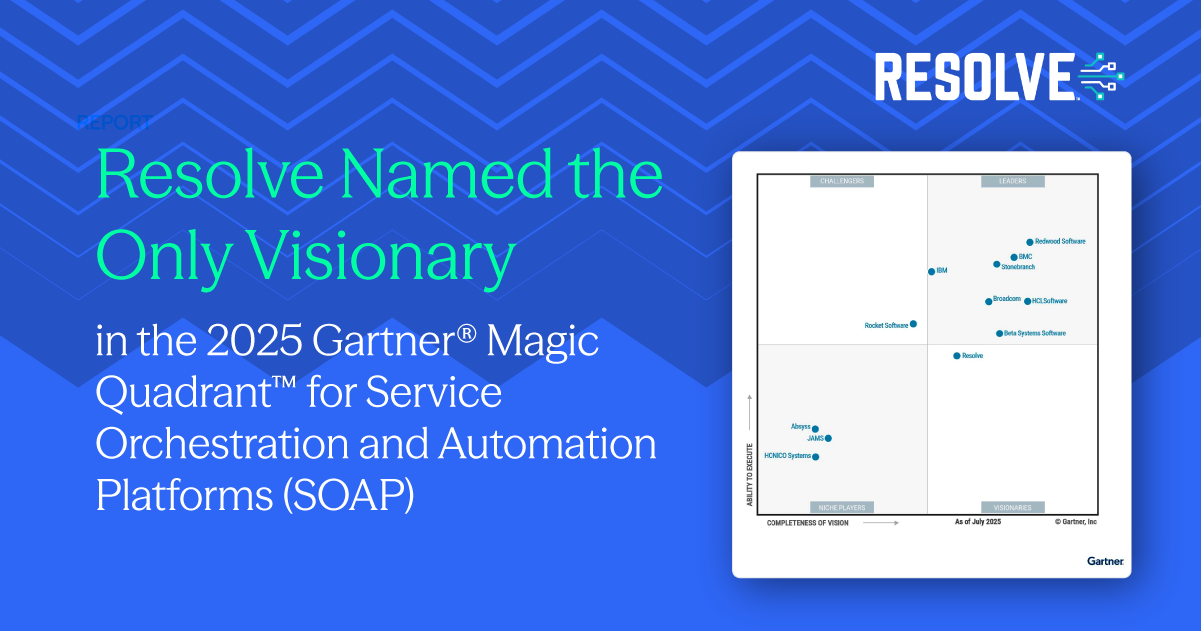
Automation Mistakes: The Anti-Patterns Holding IT Back
Subscribe to receive the latest content and invites to your inbox.
In a world where AI and automation are redefining enterprise IT, there's one harsh truth that often gets overlooked: most automation initiatives fail before they begin. Not because the technology isn't ready, but because the strategy isn't. Too often, teams fall into well-worn traps—automation anti-patterns—that stall progress, waste resources, and fail to deliver meaningful impact.
Let's call them what they are: automation mistakes. These are common across ITSM, I&O, and NetOps environments. And if we want to advance toward a Zero Ticket IT model, where 90% of incidents and requests are handled autonomously, we need to recognize these mistakes, understand their consequences, and adopt a smarter, more intentional approach to automation.
Mistake #1: Chasing the Perfect Process Before Automating
One of the most common pitfalls is trying to define and align on a perfect end-to-end process before building anything. Teams spend weeks or months designing overly polished flows, seeking broad consensus, and getting buy-in from multiple stakeholders all before a single automation goes into production.
This waterfall-style approach delays value and creates unnecessary complexity. A better path is to treat automation like software development: build incrementally, deliver early value, and refine based on how things perform in the real world. High-value building blocks should be deployed and improved in production, not trapped in theoretical planning. Iteration isn't a compromise; it's how automation succeeds.
Mistake #2: Treating Automation Like a One-Off Project
Too many organizations still treat automation like a discrete project with a defined start and end, rather than a long-term capability that requires continuous investment and improvement. This leads to fragile, one-time scripts or narrowly scoped workflows that quickly become outdated or abandoned.
Adopting a product mindset is critical. That means managing automation assets with version control, measuring usage and ROI, and continuously evolving based on operational feedback. Automation isn't something you complete; it's something you grow, just like any other strategic system.
Mistake #3: Ignoring the Employee Experience
Many automation efforts focus exclusively on efficiency and cost reduction, with little consideration for how the experience feels to the end user. Portals that push users to sift through knowledge articles, forms that are more complex than the problems they solve, and chatbots that dead-end into ticket forms all contribute to a frustrating, ineffective experience.
The goal of automation should be to improve employee productivity and engagement—not just to deflect tickets. If an automation flow increases user friction, it's not a success. Organizations need to evaluate automation through the lens of the employee, making sure that it actually helps people get back to work faster, without unnecessary hurdles.
Mistake #4: Building Monolithic Automations
Another common anti-pattern is trying to build massive, end-to-end automations that handle every edge case and variation out of the gate. These large-scale projects are brittle, time-consuming, and hard to maintain.
A more effective approach is modularity. By developing reusable automation blocks that can be composed into larger workflows, teams gain flexibility, speed, and resilience. Resolve's platform architecture is designed for this kind of composability; allowing automation teams to deliver early value while building toward broader coverage over time.
Mistake #5: Treating Shadow IT as a Problem to Eliminate
Shadow IT is often seen as something to root out and shut down. But in reality, it's a symptom of deeper dysfunction. Business units create their own automation solutions because they can't get what they need from IT, either due to slow delivery, insufficient capability, or overly restrictive policies.
Rather than cracking down, IT teams should treat shadow IT as a source of insight. These efforts often reveal unmet needs or innovation opportunities that IT can help scale and secure. If automation is thriving outside the boundaries of central IT, it's time to ask why and how IT can evolve to meet that demand with better service and support.
Mistake #6: Solving Automation Challenges by Hiring More People
Many organizations try to address growing ticket volumes by hiring more helpdesk staff. But this only adds cost, creates longer chains of handoffs, and burdens the organization with even more low-value manual work.
Each new agent is another person who may follow a script without fully understanding the issue, leading to more escalations and delays. This model doesn't scale; it fragments. Instead, automation should be deployed to handle repetitive requests and known issues, so human agents can focus on high-touch, strategic problems where they add the most value.
Mistake #7: Failing to Measure Automation Coverage
IT teams often track metrics like ticket volume, MTTR, and SLA compliance—but overlook the most critical metric: automation coverage. This shows how much of your request and incident volume is actually being resolved autonomously.
Without this data, you can't identify gaps or track progress. By layering in KPIs like ticket deflection rate, MTTP (mean time to prevent), and self-service success, you move beyond response speed to outcome quality. Resolve's platform helps teams visualize and improve automation coverage across all major ticket types, driving continuous improvement at scale.
Mistake #8: Exclusively Focusing on Automating What's Easy Instead of What's Impactful
Automation strategies often focus on low-hanging fruit (password resets, system restarts, onboarding basics) because they're easy to implement. But stopping there limits the impact.
The most valuable automations often lie in more complex or high-frequency workflows. Identifying these requires analyzing ticket data, evaluating business impact, and aligning automation priorities with broader organizational goals. Resolve's AI agents and ticket analysis tools make it easier to pinpoint these opportunities and build a roadmap for high-ROI automation.
From Anti-Patterns to Strategic Execution
When these anti-patterns are addressed, automation becomes a driver of meaningful change. IT teams can move faster, with fewer false starts and less manual overhead. Automation assets become reusable, composable, and resilient. And employee experience improves; not just because systems are more reliable, but because support is instant, personalized, and invisible.
This is the foundation of Zero Ticket IT: a new operating model where incidents and requests are resolved at the source, before they ever become tickets. It's a shift from firefighting to foresight, from escalation to enablement.
Resolve's agentic automation platform enables this shift by providing AI-powered agents, modular workflow orchestration, and rich analytics that tie automation back to employee productivity and business outcomes. The result is a service delivery model that moves at machine speed, with human oversight and strategic alignment.
Looking Ahead
Automation isn't just about reducing effort. It's about rethinking how IT creates value. By avoiding these common mistakes, organizations can unlock faster time to value, better employee experiences, and a more strategic role for IT in the business.
Zero Ticket IT isn't a distant goal. It's a practical, achievable outcome, but only if we build it the right way.
Click here to download our full-length Zero Ticket IT Manifesto and learn more about why the future is agentic AI!






